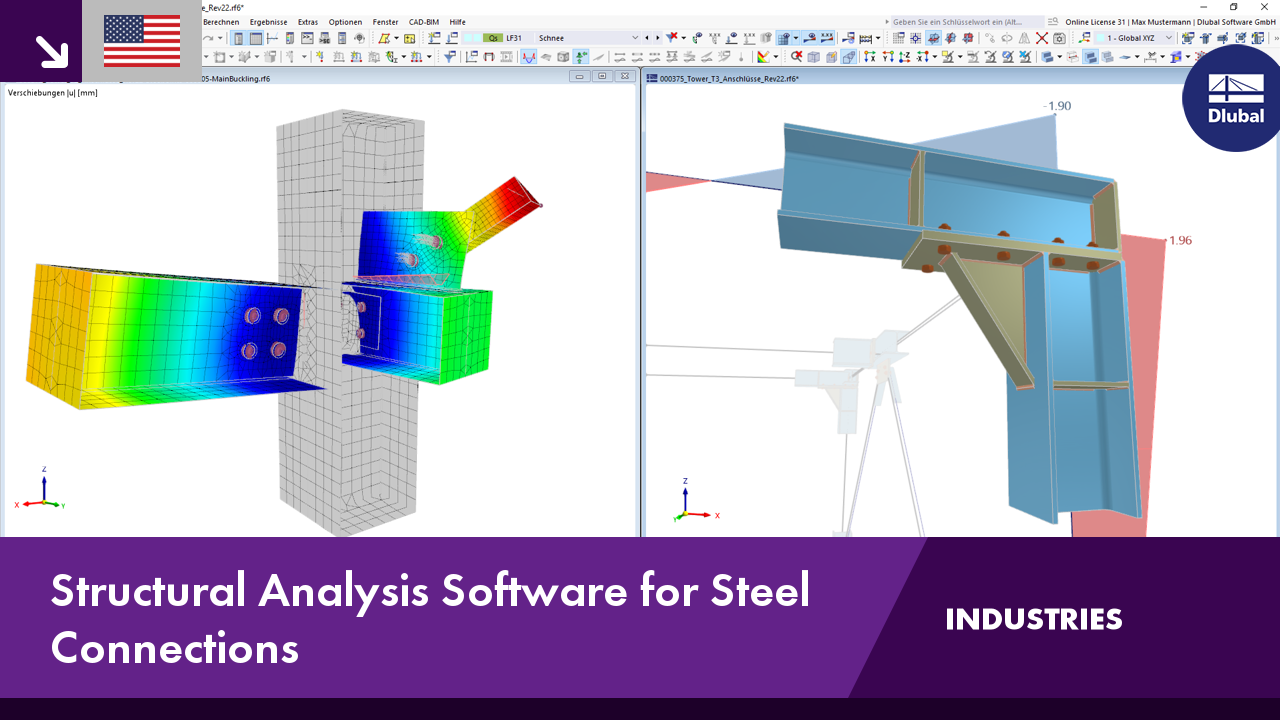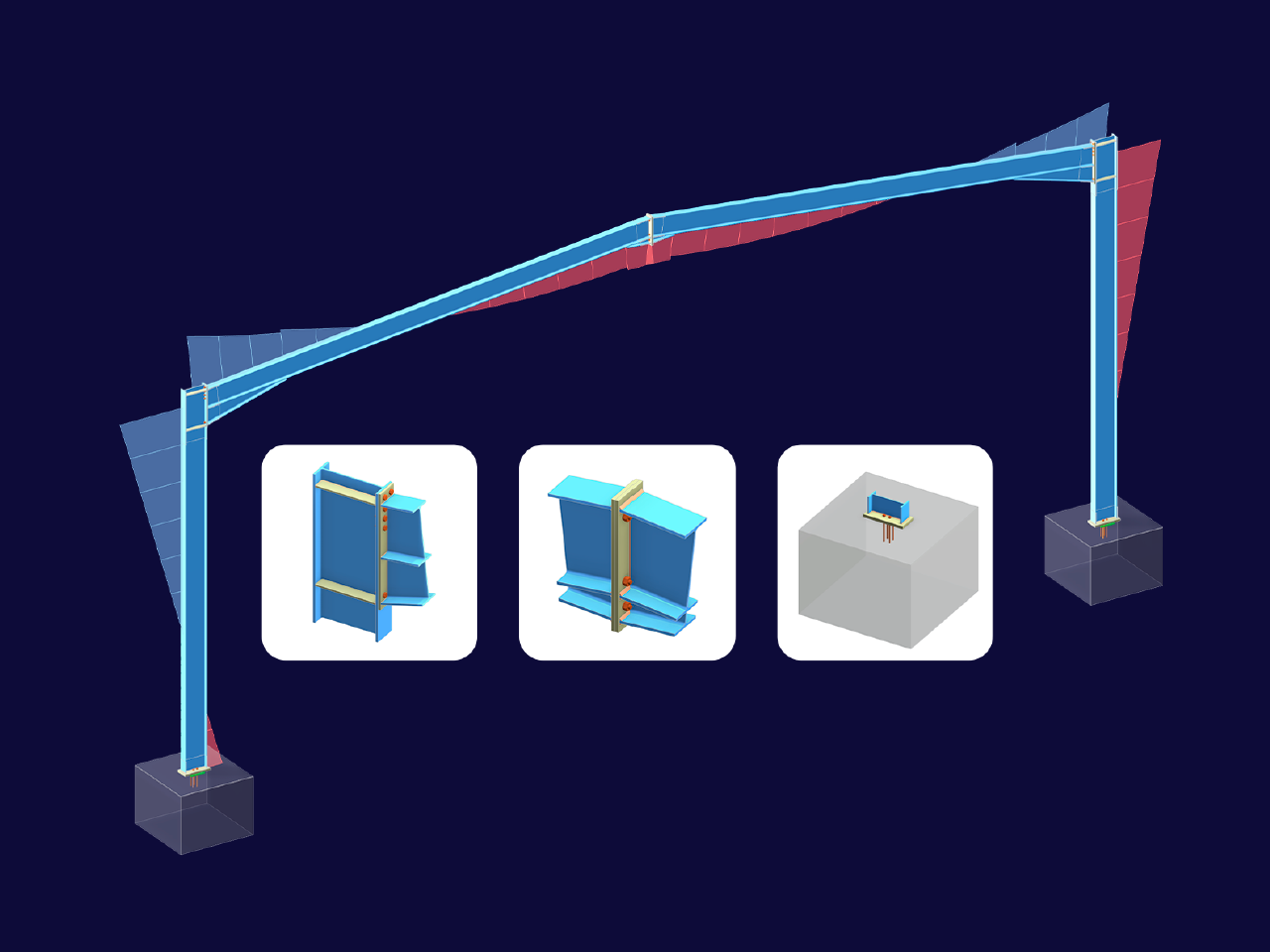Question:
How can I model double members in RFEM 6, such as those in a telescopic connection?
Answer:
The nested components of a telescopic boom of a structural machine transport their forces mechanically between the components, for example.
This special force transfer can be solved in RFEM 6 as follows:
► Image | Modeling Plug Connection https://www.dlubal.com/en/img/051100
A characteristic plug connection like the one shown in the sketch consists of four members. In the overlapping area, two members (Member 2 and Member 4) are overlapping.
You can create superimposed members using line releases. To do this, define a line release on Line 2 that releases Member 2. The line release creates the released Line 4 with the corresponding released Node 4 and Node 5. However, the members should be connected at their nodes, so Line 4 should be defined by the same Nodes 2 and 3 as Line 2. Therefore, the generation of the released Nodes 4 and 5 is prevented by specifying the Definition Nodes 2 and 3.
► Image | Line Release https://www.dlubal.com/en/img/051102
The properties of the line release are described by hinges in the line release type. The members should be completely decoupled from each other along their length, so that all degrees of freedom are released.
► Image | Line Release Type https://www.dlubal.com/en/img/051103
Member 4 can now be defined on Line 2.
To ensure that the force is transferred correctly to the structure, it is necessary to arrange specific member hinges.
A moment hinge (scissors hinge) on Members 1 and 2 at Node 2 as well as on Members 4 and 3 at Node 3 should ensure that the bending moment load between the red members (Members 1 and 2) and the green members (Members 3 and 4) is transferred by the force couple on Node 2 and Node 3.
An axial force hinge (scissors hinge) on Members 4 and 3 at Node 3 should ensure that the axial force load is only transferred between the green and red continuous members for the planned fixation at Node 2.










.png?mw=350&hash=c6c25b135ffd26af9cd48d77813d2ba5853f936c)

















.png?mw=512&hash=4a84cbc5b1eacf1afb4217e8e43c5cb50ed8d827)

















_1.jpg?mw=350&hash=ab2086621f4e50c8c8fb8f3c211a22bc246e0552)



